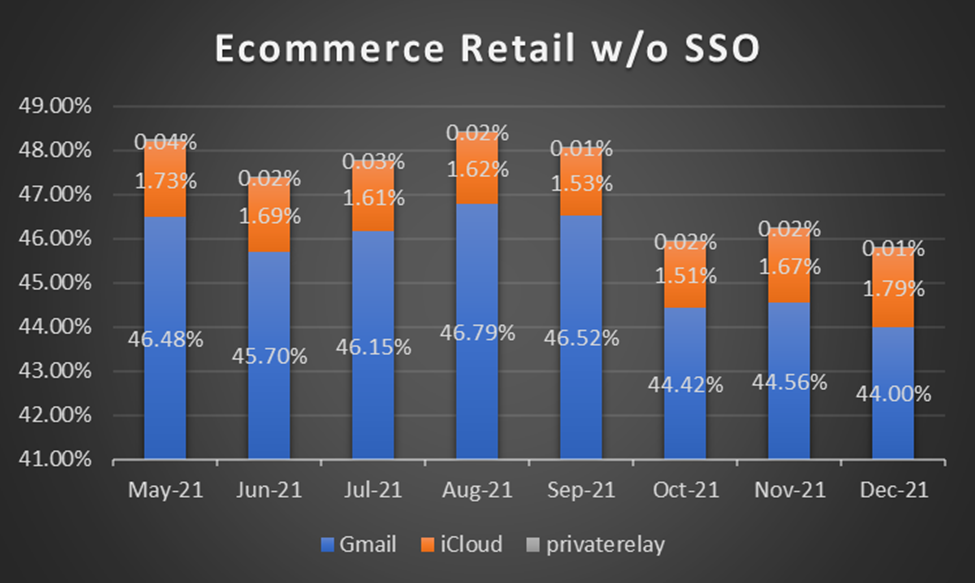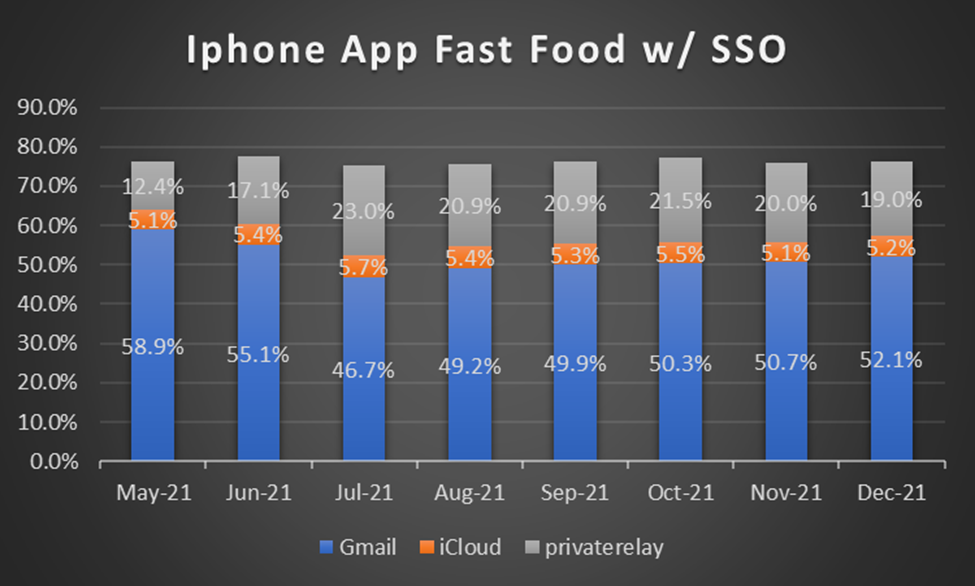- Data Services
- Fraud Prevention
- Solutions
- Resources
- About
- Contact Us
- Login
- Try us for free
Feb 28, 2022 | 3 min read

In general, Hide My Email adoption rates appear to be very low. However, for those offering Apple’s Single Sign-on within a mobile app, the stakes are much higher.
The Apple iOS15 update released in September has had a material impact on email marketing. Specifically, as part of their “Mail Privacy Protection” initiative, Apple is masking “opens” and IP addresses and now more prominently offering a Hide My Email (HME) function that allows those that use it to present a randomly-generated email address at sign-up, which in turn forwards mail to their primary email account.
Today, after allowing a few months for the data to build, we’re going to dive into what TowerData and FreshAddress are seeing relative to the Hide My Email functionality.
To baseline, TowerData and FreshAddress process billions of email address events monthly on behalf of our over 1000 active clients. Our clients use our Email Verification, Fraud Prevention, and Identity Services to clean, protect, and grow their customer databases. Our APIs are secure,robust and relied upon daily by dozens of Fortune 500 businesses.
We know that the Hide My Email service currently employs two domains – icloud.com and privaterelay.appleid.com, and it’s available through iCloud+ and Sign in with Apple (SSO). So, to quantify adoption rates of HME we analyzed data by domain for eight months May 2021 – December 2021. Across our API, gmail.com is typically about 40% of the traffic, icloud.com 1.8% and privaterelay.appleid.com 0.3%. But what are the trends?
To help visualize our findings, we created two data sets. Set one is from the ecommerce vertical where our real-time Email Validation service is implemented.

Here, you can see Gmail represents 44-46% of the traffic. Icloud 1.5-1.79% and PrivateRelay is almost non-existent. In October, there’s a dip in Gmail by a couple of points and then a slight bump in December for iCloud, but in general this is not an obvious trend or correlation.
It seems intuitive that if HME were widely adopted there would be a noticeable transfer from Gmail to Icloud/PrivateRelay as iOS users employ the service.
Set two represents mobile app generated data for a global restaurant chain, also using our real-time Email Validation service.

Here we see Gmail averaging 51.6% of the traffic, iCloud 5.4% and PrivateRelay a staggering 19.3%. Again, there doesn’t seem to be an obvious upward trend in HME adoption. Instead what’s notable is the adoption rate of HME when Sign In with Apple is offered. Twenty percent of the time this business is missing the opportunity to collect strong first-party data.
There are many reasons to employ SSO from a security and technical perspective that are outside scope for most marketers. And we trust there’s data supporting that it has a positive impact on conversion rates. But if 20% of your captured data is random non-identifiable emails, is it time to take another look?
The results, overall, are a mixed bag. For traditional email address capture within a browser, the HME adoption rates are extremely low, but then in an SSO environment, the adoption rates are much higher. So what should businesses do? At this point we’d suggest you continue to monitor email capture for address quality, in part by using an Email Validation service. As the value and importance of first-party data continues to rise, marketers should be even more mindful of the accuracy of the first-party data they capture. Secondarily, if you’ve chosen to use SSO we’d suggest it’s a good time to dive into that data. Here at TowerData and FreshAddress, we’ll continue to monitor these domain trends in the aggregate and publish updates as appropriate.